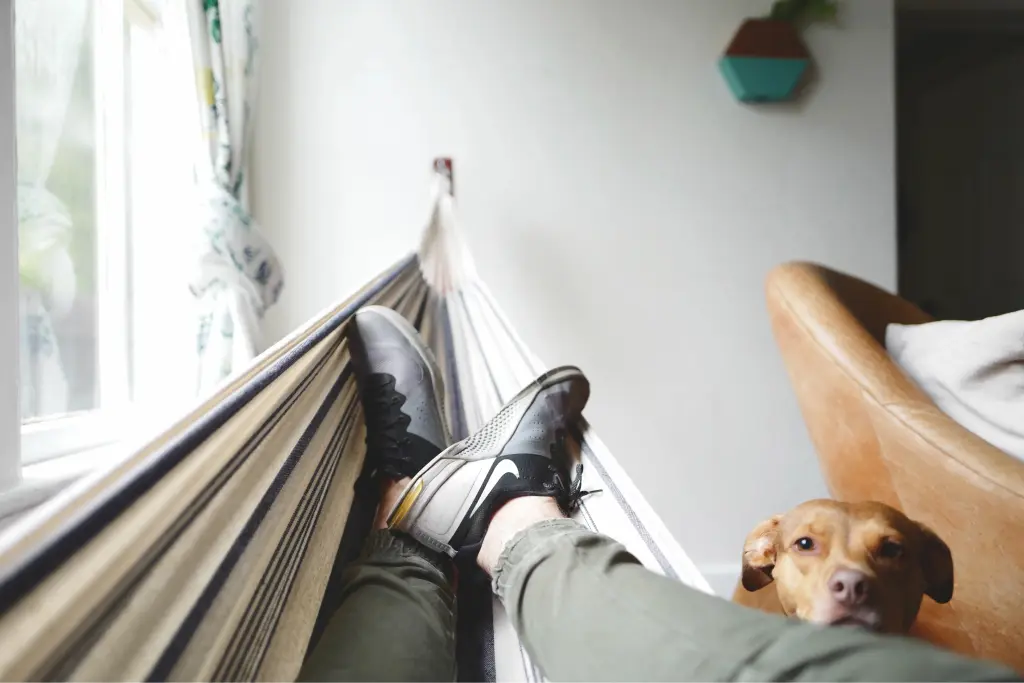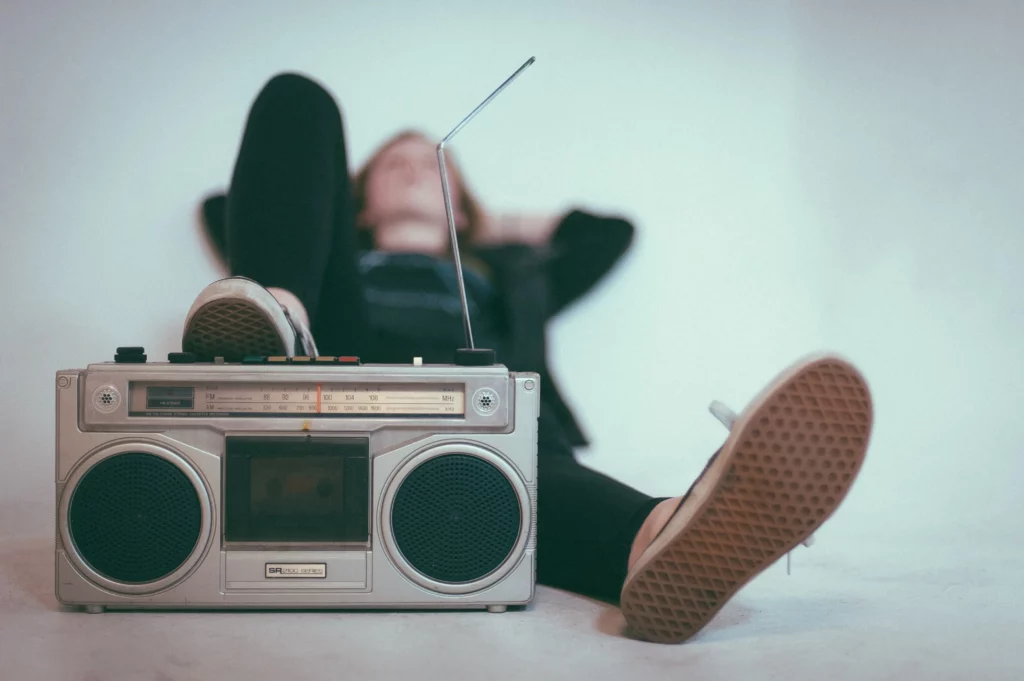Your Guide to Recovering from iLink® FDA-Approved Cross-Linking

After conducting all of your research and confirming your doctor performs iLink® FDA-approved cross-linking to slow or halt the progression of your progressive keratoconus – now what? First, you should be proud that you are taking steps towards prioritizing your eye health. This is no easy feat, and you deserve to be recognized for it!
By now, you’ve probably learned all about the procedure from your doctor and studied up on what you can expect from the cross-linking procedure. However, you may have some additional questions on what your recovery might be like, such as: What can I expect following the procedure? When can I return to my normal activities? What supplies will I need at home to make myself comfortable? What will I do during my recovery to pass the time? Don’t worry, we’re answering all of these questions and more, so you can feel fully prepared heading into your procedure.
It’s important to know that recovery is different for everyone. We’re providing you with a full iLink® Recovery Guide below, which includes information on how to prepare for your procedure, when you can expect to return to your normal routine, and suggested essentials. Continue reading to learn more!
What to Expect After Cross-Linking
Immediately after treatment, a bandage contact lens is placed on the surface of your eye to protect the newly treated area. After the numbing drops wear off, you may feel some discomfort, often described as a gritty, burning sensation. This discomfort can often be managed with Tylenol and artificial tears. If your pain is severe, make sure to contact your doctor, as oral narcotic medications may be used.
Ultimately, the goal of the iLink® procedure is to stiffen the cornea to slow or halt further progression of keratoconus to preserve your vision. While cross-linking is not intended to eliminate or reduce dependence on refractive correction, reduced progression may allow you to be better fitted for contact lenses, which in turn can improve vision.
In order to help you feel better prepared before your procedure, we’re providing some guidelines to follow after receiving iLink®:
- While those with keratoconus should always avoid eye rubbing, it’s especially important not to rub your eyes for the first five days after the procedure.
- You may notice a sensitivity to light, which can be helped by wearing sunglasses. You may also experience a foreign body sensation, causing discomfort in the treated eye.
- If you experience severe pain in the eye or any sudden decrease in vision, contact your physician immediately.
- If your bandage contact lens from the day of treatment falls out or becomes dislodged, do not replace it and contact your physician immediately.
- While uncommon, ulcerative keratitis, a potentially serious eye infection, can occur after treatment. Your doctor should monitor defects in the outermost corneal layer of the eye for resolution. The most common ocular side effect to occur is haze. For the full list of potential side effects, see Prescribing Info.
As with any medical procedure, it is necessary to give yourself adequate time to rest and recover before jumping back into your daily activities. For example, you likely won’t want to rush to return to work or school if you’re still experiencing any discomfort. Cross-linking recovery will be different for everyone, so you should talk to your doctor about what recovery might look like for you, and how long you should expect to forgo certain activities. If you wear contact lenses, you should also ask your doctor when it’s okay to resume wearing them. Typically, patients are allowed back into contact lenses by about one month after treatment, but this timeline varies from person to person. Remember, if you notice anything out-of-the-ordinary with your recovery, make sure to call your doctor immediately.
Stock Up On Recovery Essentials
In the days leading up to your iLink® procedure, you may find it helpful to stock up on some essentials for your recovery, such as medications and basic groceries. This way, you won’t be scrambling at the last minute, and you’ll feel more prepared going into the procedure. If possible, make sure you have the following items on-hand in order to make your recovery an easier, more manageable experience:
Pain Relievers

It’s a smart idea to have some over-the-counter pain relievers at your disposal in case you need them. After the numbing drops from the procedure wear off, you may experience some discomfort or a gritty, burning sensation. If you do experience this, be sure to check with your doctor regarding which over-the-counter medications are okay to take with any prescription medications your doctor may provide.
Artificial Tears
Another option to help manage potential discomfort after the procedure is by using preservative-free artificial tears, which are used to lubricate dry eyes and help keep the outer surface of your eyes moist. Artificial tears can be especially helpful in treating dry eyes after a surgical procedure, such as cross-linking.
Comfortable Attire
The last thing you’ll want to do is arrive home from your cross-linking procedure to realize you have nothing clean to wear while you recover. Instead, pick out a few comfortable outfits beforehand, including your favorite sweatpants and tee shirt or other loungewear, and make sure they’re clean and easily accessible.
Snacks and Drinks
It’s important to nourish your body during your recovery, so you’ll likely want to purchase a few essential grocery items before your procedure so you don’t have to stress over it later. Think about grabbing a few pre-packaged snacks, frozen meals, and sports drinks, so that you don’t need to put too much energy into meal preparation. It’ll make your recovery that much easier knowing your favorite snacks and drinks are ready to grab and go!
Ice Packs
Resting ice packs on your eyes can be a great way to manage any discomfort you may be feeling during your recovery. While you’re at the store stocking up on snacks and drinks, grab a few ice packs to keep in the freezer. That way, if you need them while you recover, they will be easily accessible and already frozen.
Blackout Curtains
You may experience light sensitivity following your iLink® procedure. To help ease this symptom, spend your recovery in a room that has blackout curtains, or curtains that best block out any exterior light. If you do not have blackout or dark curtains at home, try draping a blanket over some windows to minimize any glare or exposure to sunlight.
How to Occupy Your Time During Recovery
It can be hard to slow down and take a step back from your hectic daily schedule, but it’s necessary to do so while you heal from cross-linking. You may need to take a few days off from your regular activities, such as work or school, and you can discuss with your doctor what your specific recovery timeline will look like. Although it’s important to let your body rest and recover during this time, that doesn’t mean you can’t find some enjoyable activities to pass the time until you’re fully healed. Some suggestions on how to spend your time during recovery include:
Listen to A Podcast
Recovery doesn’t need to be boring. Instead, kick up your feet and distract yourself with an interesting podcast to pass the time. Podcasts are a great way to relax your eyes while stimulating your mind. In the mood for something funny, serious, scary, or historical? Good news – there are countless options to choose from. Check out some of the top podcasts of 2021 here. Before you know it, you’ll be well on your way to recovery.
Jam Out to Some Tunes

What better time to listen to your favorite musician’s entire album collection from beginning to end than now? Not only is listening to music a relaxing and enjoyable experience, but studies have shown that it can also improve blood flow, lower levels of stress-related hormones, and even ease pain. Alexa, turn on “my recovery playlist!”
Listen to an Audio Book
Resting your eyes during cross-linking recovery? No problem! A couple of days on the couch will be much more enjoyable with the right audiobook to transport your mind elsewhere. Before your procedure, peruse the New York Times Bestseller List and pick out something that piques your interest.
Get Some Rest
It may seem simple, but how often do you get to rest at your leisure? Use your recovery to take a break from your normal, hectic life and get some much-needed and well-deserved shut-eye. Whether you choose to sleep in, take an afternoon nap, or hit the hay earlier in the evening, your body will thank you for it. Not only will getting some extra sleep feel good, but it will also help you to recover.
Your Recovery Awaits
Although it’s normal to be nervous about the aftermath of an upcoming medical procedure, your recovery from cross-linking doesn’t have to be stressful or dreaded. With some planned activities to pass the time and a few essential supplies, you can feel much more prepared.
If you have any specific questions about your corneal cross-linking recovery or notice any unusual symptoms following your procedure, make sure to contact your doctor. If you’re looking to hear from others who have undergone cross-linking, check out their KC Journeys. You can also visit our website to learn more about the procedure or to find a keratoconus specialist near you.
Don’t forget to follow us on Facebook, Twitter, and Instagram for more information on keratoconus and iLink® FDA-approved cross-linking.